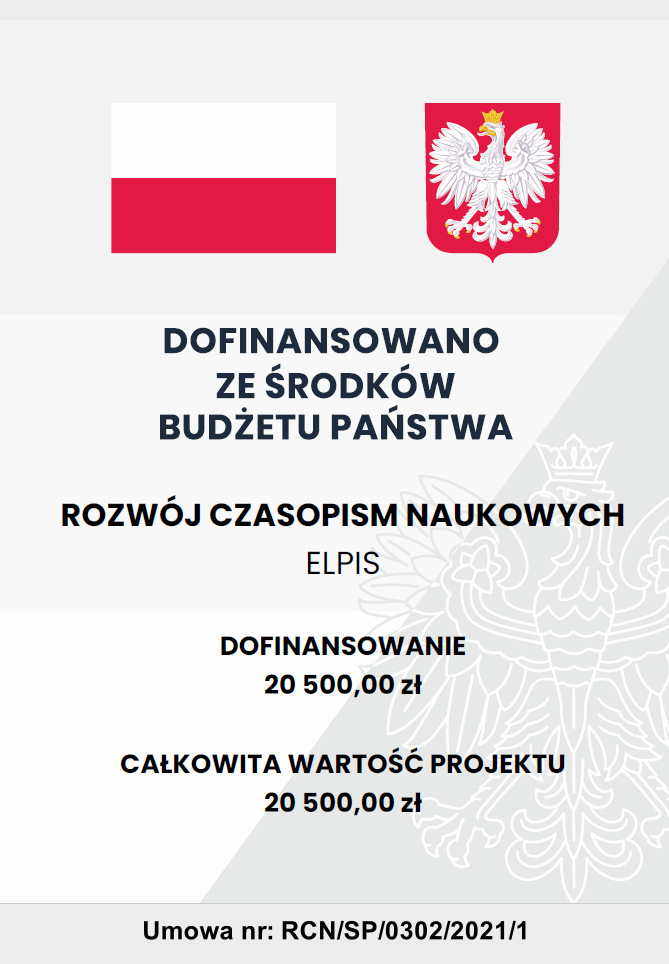The Wedding Ring – Its History and Significance in the Tradition of the Orthodox Church
DOI:
https://doi.org/10.15290/elpis.2016.18.10Keywords:
wedding ring, rite of engagement, sacrament of marriage, OrthodoxyAbstract
In Orthodox Church practice, the Sacrament of Marriage is always preceded by the Rite of Engagement (gr. αρραβών), which is a prelude to the main ceremony. It is a sort of assurance that is given by a fiancée and a bridegroom which means that they intend to embark on a path of married life, and the engagement period allows them to prepare for that. This is also borne out by the translation of the ancient Greek term αρραβών (Hebrew: ērābōn), which means i.e. a guarantee, surety and pledge. However, Fr. J. Meyendorff interpolates that an engagement (...) is something more than just an obligation or duty. It expresses the actual marriage bond, which lacks only the sublime sacramental object. That is why it is celebrated just before wedding service. Its central moment is the placing on the fingers of the bride and groom wedding rings with the accompanying words of the priest: The servant of God (name) is betrothed to the handmaiden of God (name) in the name of the Father, and of the Son, and of the Holy Spirit. Amen, and The handmaiden of God (name) is betrothed to the servant of God (name), in the name of the Father, and of the Son, and of the Holy Spirit. Amen.
Wedding ring is a sign, proof and pledge of the marriage of the bride and groom. Its circular form has neither beginning nor end, which is a symbol of eternity. The matter of which it is made has to constantly remind the spouses of the fact that they themselves did not put it on their fingers, but the One who is Alpha and the Omega, the First and the Last, the Beginning and the End, and that the love which has joined them together will be often put to the test. However, just as gold is tried in the fire and is not damaged in any way, so their love, in difficult times, will resist arrows of temptations of the enemy of the human race directed at them.
Downloads
References
Biblia Tysiąclecia. Pismo święte Starego i Nowego Testamentu, wyd. Pallotinum, Poznań 2000.
Κλήμης Αλεξανδρεύς, Παιδαγωγός. Λόγος Γ΄, [w:] Έλληνες Πατέρες της Εκκλησίας, t. 2, wyd. Γρηγόριος ο Παλαμάς, Θεσσαλονίκη 1992, s. 228-405.
Ιωάννης Χρυσόστομος, Στον Ευτρόπιο. Ομιλία Β΄, [w:] Έλληνες Πατέρες της Εκκλησίας, t. 33, wyd. Γρηγόριος ο Παλαμάς, Θεσσαλονίκη
, s. 105-168.
Συμεών Θεσσαλονίκης, Περί του τιμίου και νομίμου Γάμου, [w:] J.– P. Migne, Patrologiae Cursus Completus, Series Graeca, t. 155, Paris 1857-1866, s. 504-516.
(brak autora), Δακτύλιος του Αρραβώνα, [w:] EΣΤΙΑ, t. 4, nr 86, Αθήνα 1877, s. 541-542.
Βακαλούδη Α.Δ., Καλλιστεία και Γάμος στο Βυζάντιο, wyd. Αδελφοί Κυριακίδη, Θεσσαλονίκη 1998.
Θεοδώρου Ε., Μνηστεία, [w:] Θρησκευτική και Ηθική Εγκυκλοπαίδια, t. 8, Αθήνα 1963, s. 1235-1238.
Μάγεντορφ Ιωάννης πρωτοπρ., Ο Ορθόδοξος Γάμος, tłum. na jęz. grecki – αρχιμ. Αθηναγόρας Δικαιάκος, wyd. AKΡΗΤΑΣ, Νέα Σμύρνη 2004.
Πολίτου Ν.Γ., Γαμίλια σύμβολα, [w:] Λαογραφικά σύμμεικτα, t. B΄, Αθήνα 1921, s. 218-267.
Σκαλτσής Π.Ι., Οι συμβολισμοί στην ακολουθία του Γάμου, [w:] tenże, Λειτουργικές μελέτες, t. Α΄, wyd. Π. Πουρνάρα, Θεσσαλονίκη
, s. 99-145.
Τζέρπος Δημήτριος πρωτοπρ., Σύμβολα και συμβολισμοί κατά την τέλεση του Ορθοδόξου Γάμου, [w:] tenże, O αγιασμός της ζωής των πιστών, wyd. TΗΝΟΣ, Αθήνα 2006, s.67-91.
Φουντούλης Ι.Μ., Τελετουργικά θέματα, wyd. Αποστολική Διακονία, Αθήνα 2002.
Желтов М.С2., Брак, [w:] Православная Енциклопедия, t. 6, wyd. Церковно-научный ценр Православная Енциклопедия,
Москва 2003, s. 146-181.
Forster D., Świat symboliki chrześcijańskiej. Leksykon, tłum. zbiorowe, wyd. PΑΧ, Warszawa 2001.
Korolko M., Leksykon kultury religijnej w Polsce, wyd. ADAM, Warszawa 1999.
Lurker M., Słownik obrazów i symboli biblijnych, wyd. Pallottinum, Poznań 1989.
Ławreszuk M., Sakrament małżeństwa. Liturgiczna symbolika i znaczenie sakramentu w Kościele prawosławnym, Białystok 2014.
Mickiewicz A., Pan Tadeusz, czyli Ostatni zajazd na Litwie. Historia szlachecka z r. 1811 i 1812 we dwunastu księgach wierszem, wyd. Prószyński i S-ka, Warszawa 1996.
Słownik grecko-polski, oprac. O. Jurewicz, t. 1, Wydawnictwo Szkolne PWN, Warszawa 2000.
Καλλίνικος Κωνσταντίνος πρωτοπρ., Ο χριστιανικός ναός και τα τελούμενα εν αυτό, wyd. Κασσάνδρα Μ. Γρηγόρη, Αθήνα 1969.
Μπαμπινιώτης Γ., Λεξικό της Νέας Ελληνικής Γλώσσας, wyd. Κέντρο Λεξικολογίας, Αθήνα 2008.
Τρεμπέλας Π.Ν., Μικρόν Ευχολόγιον, t. Α΄, Αθήνα 1950.
Булгаков С.В., Настольная книга для священнослужителей, Москва 1913.
(Румовский) Вениамин aрхиеп., Новая Скрижаль: Объяснение о церкви, о литургии, и о всех службах и утварях, wyd. Православное Братство Святителя Филарета Митрополита Московского, Москва 1999.
Шиманский Г.И., Литургика: Таинства и обряды, wyd. Сретенский Μонастыр, Москва 2003.
Downloads
Published
How to Cite
Issue
Section
License
The detailed terms of the CC BY-SA license (Attribution - Share Alike) are available on the Creative Commons website - link.
The author must complete and send to the editorial office (elpis@uwb.edu.pl) the completed and signed author's contract with a declaration of the originality of the article and the author's contribution to the article. Download Agreement File: HERE









